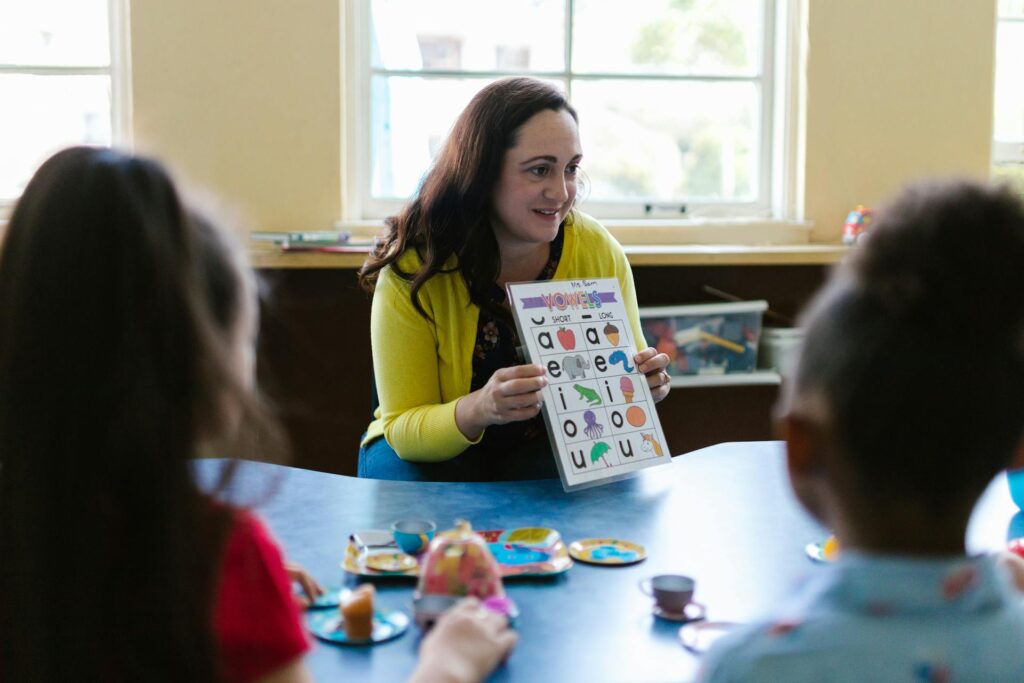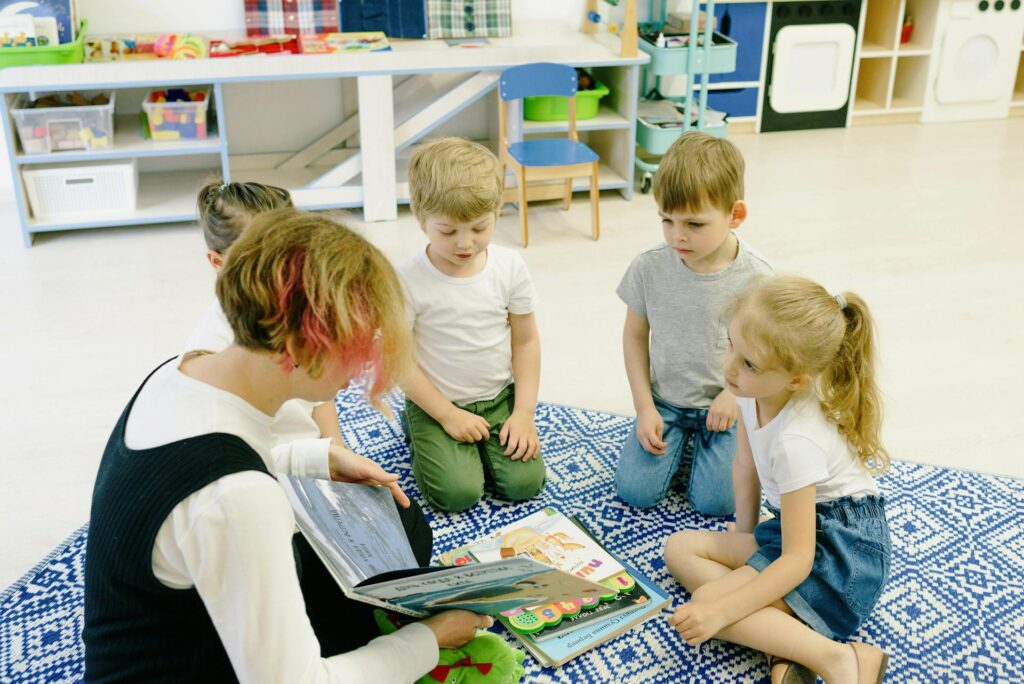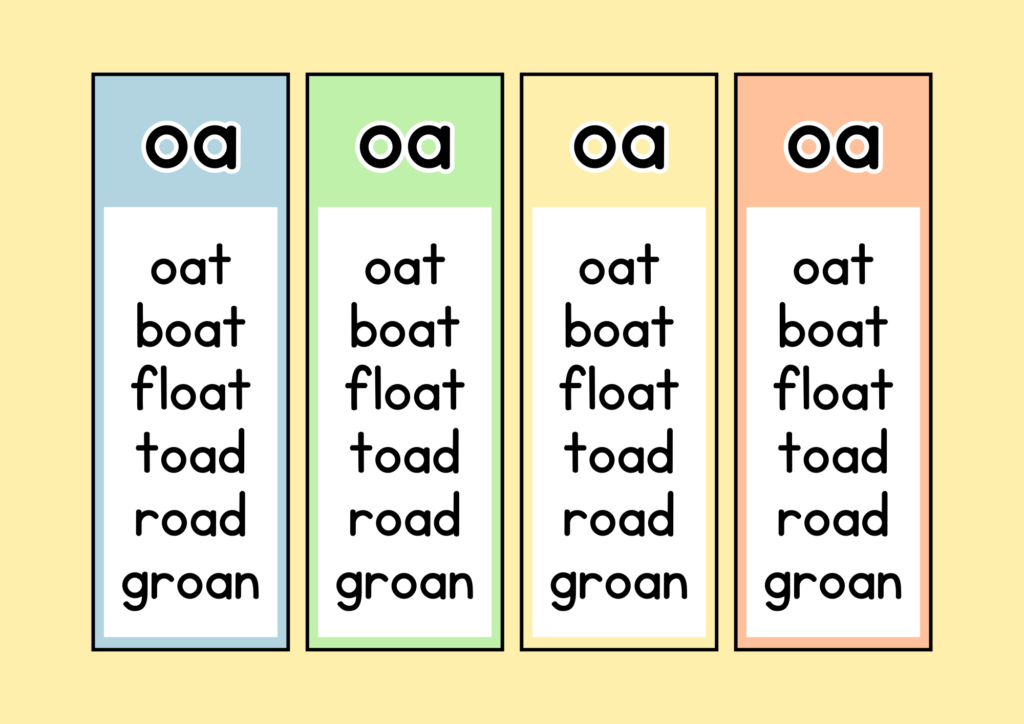Some of the links on this website are affiliate links, which means that if you click on them and make a purchase, I may earn a small commission at no additional cost to you. I only promote products and services that will add value to my readers. Thank you for supporting our work.
Teaching vowels is a fundamental step that greatly supports children in becoming confident and fluent readers. Vowels are the cornerstone of language, intricately woven into the fabric of words, and are essential for accurate pronunciation and correct spelling. Here is a detailed guide outlining practical strategies for teaching vowels to make learning more engaging and enjoyable for young learners. By incorporating fun activities and interactive techniques, educators can ignite children’s interest in vowels, helping them recognize their importance and apply their knowledge as they embark on their reading journey.
Why Are Vowels Important?
Vowels, which include the letters A, E, I, O, U, and sometimes Y, are essential components that connect words in our language. These letters are integral to every word and significantly influence pronunciation and meaning. For young learners, mastering the recognition of vowels and understanding the sounds they represent is crucial for developing reading and spelling skills. This foundational ability helps children decode words and enriches their linguistic development, leading to a deeper understanding of language.

How to Teach Vowels to Kids
1. Start with the Basics: Vowel Recognition
Begin by introducing the vowels A, E, I, O, and U as unique letters that play an essential role in forming words. Use vibrant visual aids like colorful flashcards or engaging posters featuring images corresponding to each vowel. For example, show an apple for “A,” an elephant for “E,” and so on. This visual distinction helps to highlight the vowels and differentiate them from consonants, making the learning process more exciting. Encourage children to actively participate by identifying vowels in their favorite storybooks, on road signs, or in their surroundings. Incorporating repetition into daily activities reinforces their understanding, helping them become familiar with vowels in various contexts.

2. Introduce Short Vowel Sounds First
Beginning with short vowel sounds is often beneficial when teaching young learners, as they are more straightforward for beginners to understand. Short vowels are foundational to reading and pronunciation, so focusing on their distinct sounds through simple CVC (consonant-vowel-consonant) words can be somewhat effective. Consider the following examples for each vowel:
A: Emphasize the short “a” sound with words like “cat,” “hat,” and “bat.” You can create engaging sentences such as, “The cat wore a hat,” to reinforce the sound in context.
E: For the short “e” sound, use words like “bed,” “red,” and “jet.” An example sentence might be, “The bed is red, and I see a jet,” making it vivid and memorable.
I: Introduce the short “i” with words such as “pig,” “sit,” and “fix.” For example, a fun sentence could be, “I saw a pig that likes to sit,” which playfully combines the vocabulary.
O: Practice the short “o” sound with words like “hot,” “pot,” and “fox.” A sentence like, “The hot pot is by the fox,” helps tie the sounds together in a story format.
U: Finally, for the short “u,” incorporate words such as “cup,” “bus,” and “sun.” You might say, “I put my cup on the bus under the sun,” combining visual imagery with sound repetition.
By repeating these words within sentences and incorporating rhymes, learners can solidify their understanding of each vowel sound enjoyably and engagingly. This approach builds phonemic awareness and enhances language development in young readers.
3. Transitioning to Long Vowel Sounds
Once children have a solid understanding of short vowel sounds, it’s time to introduce long vowel sounds. These sounds are unique because they closely resemble the letter’s name. For example:
A: as in “cake,” where the vowel sounds just like the letter A.
E: in “tree,” where the long sound corresponds with the name of the letter E.
I: in “bike,” showing how I is pronounced like its name.
O: in “home,” where the O sound is elongated, similar to its pronunciation when said alone.
U: in “cube,” highlighting the long sound of U.
It’s important to teach children that a silent “e” at the end of a word often makes the preceding vowel sound long. For instance, the word “hat” becomes “hate,” demonstrating how the silent “e” changes the short vowel sound into a long one. This understanding will reinforce their phonic skills and improve their reading proficiency.

4. Practice with Vowel Teams
Begin by introducing the concept of vowel combinations, specifically focusing on pairs such as “ai,” “ee,” “ie,” and “oa.” Explain to the children how these vowel pairs work together to produce long vowel sounds, creating a richer auditory experience.
For example, take the combination “ai” in “rain.” The two vowels collaborate to create a pronounced, elongated sound that recalls the images of wet weather. Similarly, highlight the “ee” in “seed,” illustrating how this pairing produces a clear, prolonged sound that evokes the idea of growth and flourishing.
Encourage the children to actively participate by providing various examples. Invite them to identify and articulate vowel teams within different words, helping to foster their listening and reading skills while deepening their understanding of how these letter combinations function. This interactive approach makes learning enjoyable and engagingly reinforces their phonetic awareness.
Recommended Resources for Early Literacy Development:
1. Learning to Read with Vowels and Phonics: This literacy book teaches children how to read. It covers letter sounds, letter blending, and decoding words.
2. Flash Cards: Sight Words: A brightly illustrated set of flashcards designed to reinforce essential sight words, enabling children to recognize familiar words quickly and boost their reading confidence.
3. Flash Cards: Alphabet: These fun and colorful alphabet flashcards make learning the ABCs entertaining and interactive. They are perfect for developing letter recognition and phonetic skills.
4. My First Library: Boxset of 10 Board Books for Kids: This delightful collection features ten sturdy board books filled with vibrant illustrations and simple text, ideal for little hands and curious minds eager to explore stories.
5. Dr. Seuss’s Beginner Book Boxed Set Collection: This whimsical assortment of beloved Dr. Seuss titles is perfect for nurturing a love of reading through playful rhymes and imaginative tales that encourage creativity and language development.
In conclusion, Teaching vowels is an exciting and rewarding journey that paves the way for literacy. By recognizing vowel sounds, understanding sound associations, and incorporating practical, interactive activities, you can build a solid foundation for your child’s reading development. Engaging exercises, such as games and songs, make learning satisfying and reinforce their understanding. With consistent practice, supportive guidance, and a bit of patience, your child will not only master the intricacies of vowels but also gain the confidence needed to become a fluent reader, ready to explore the world of books and stories.


Hi there i am kavin, its my first occasion to commenting anywhere,
when i read this piece of writing i thought i could also make comment due to
this good piece of writing.